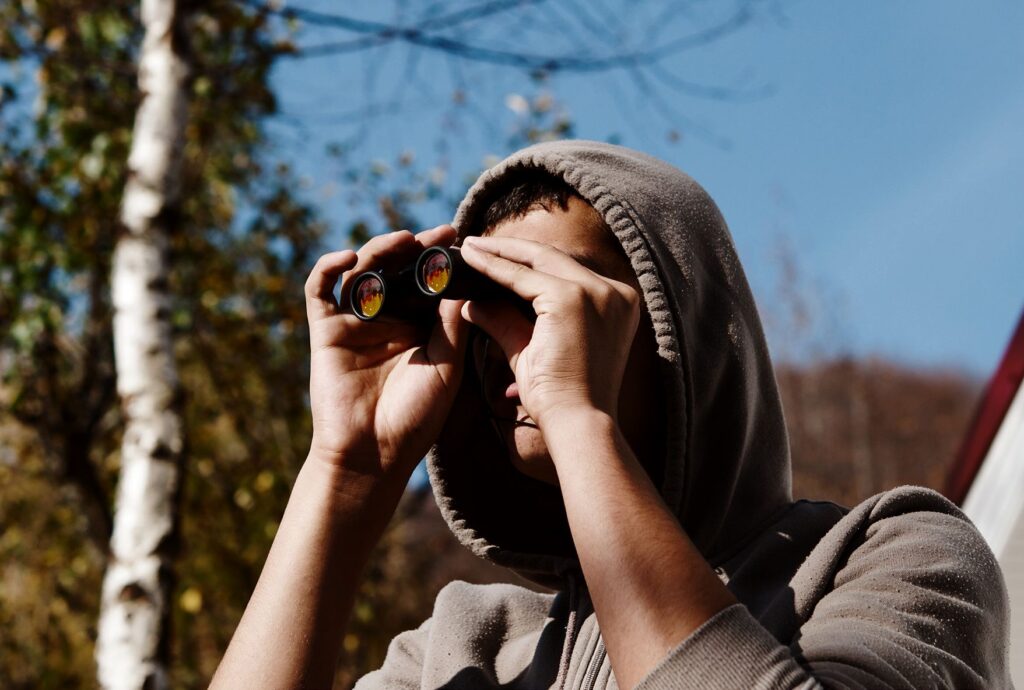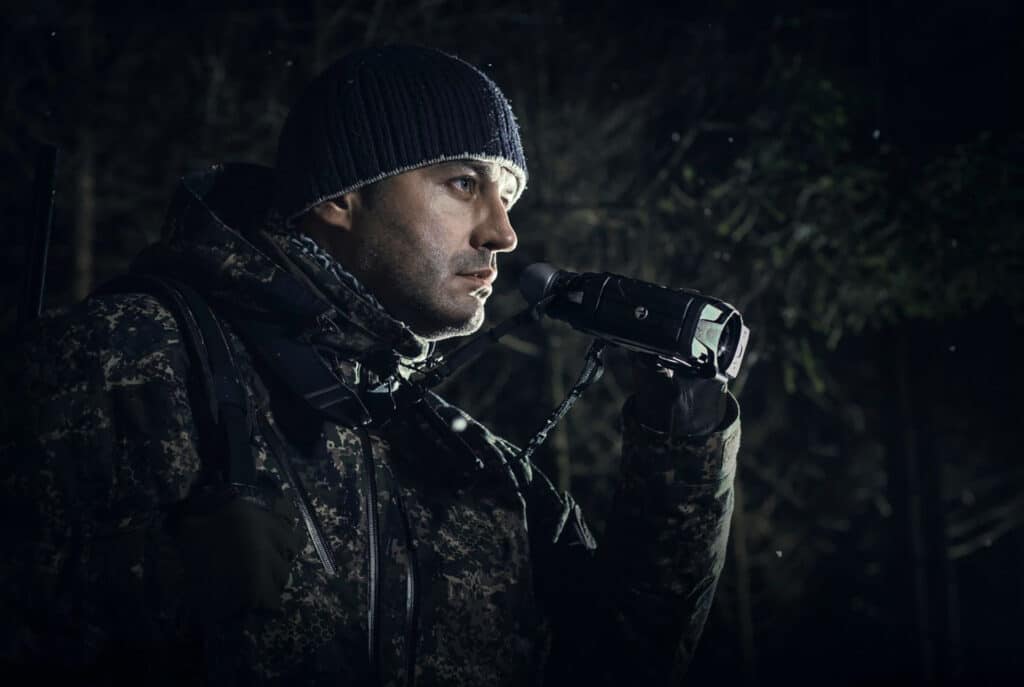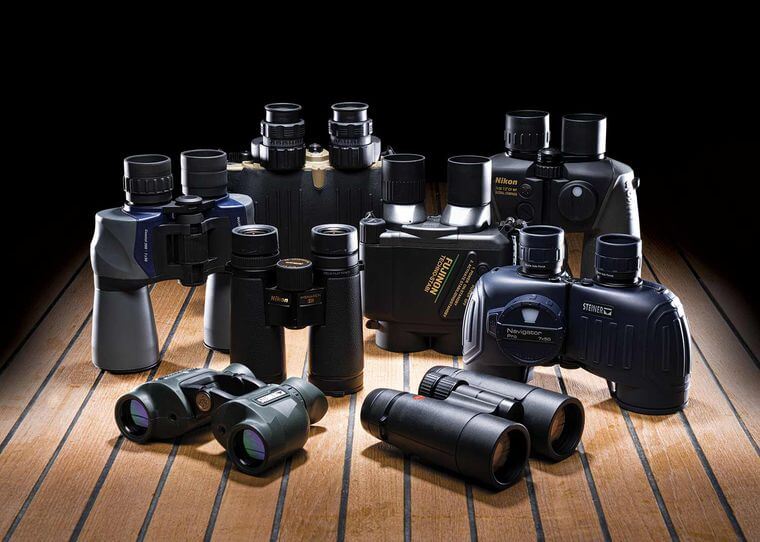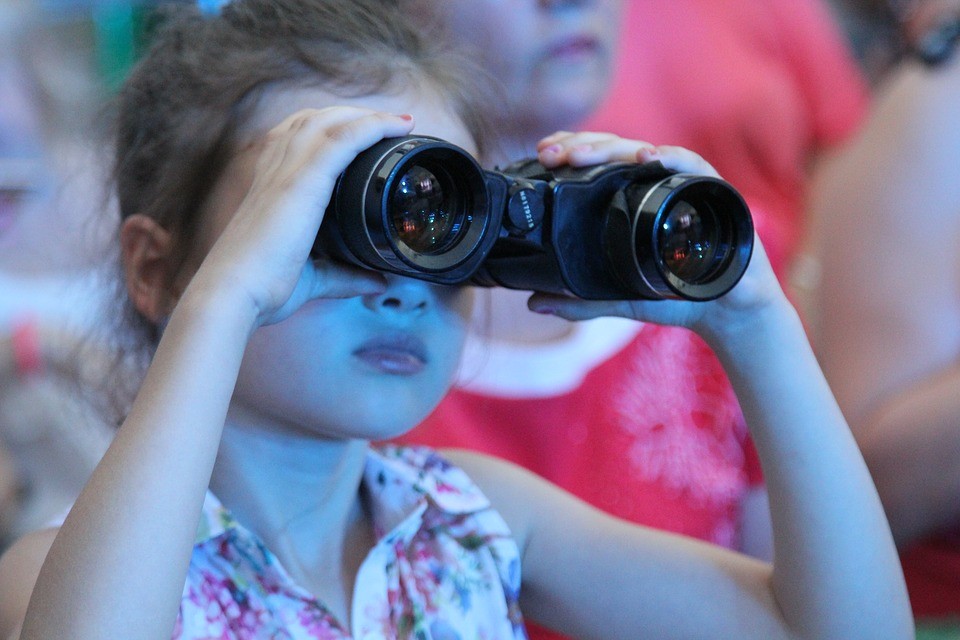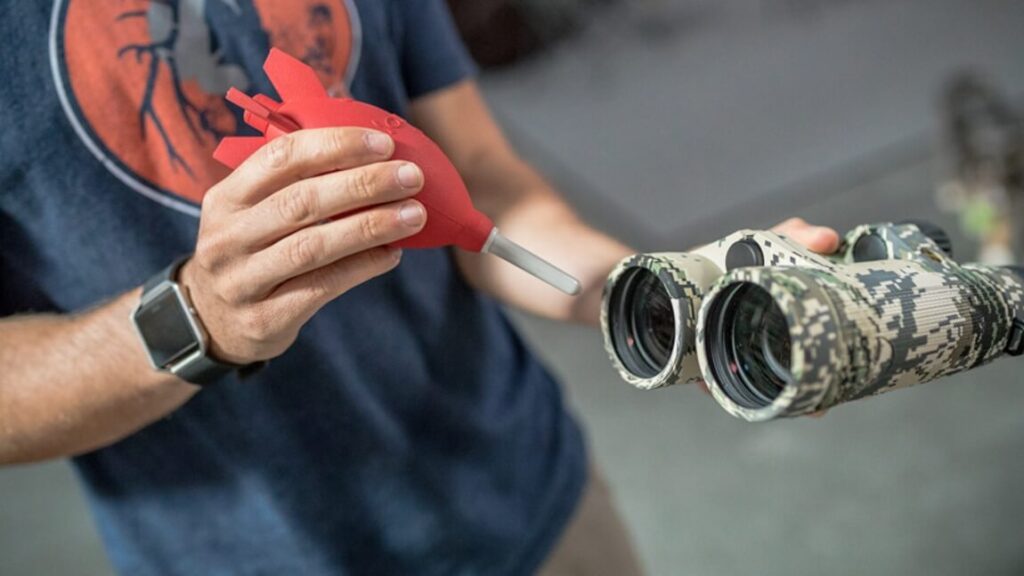

You can save yourself the expenses of visiting an optics repairs shop if you know the basics of repairing binoculars at home. Do you have one?
Sky gazing, hunting, sports watching, bird watching, or nature lover, whatever your choice of activity is, if you are indeed a true lover of any, then chances are you own binoculars. You will agree, whatever your category is, that the view gets better with binoculars. It’s a thrilling experience to view objects or events hundreds or thousands of yards away.
Binoculars also called field glasses in a simple language, are made from two telescopes mounted side-by-side that enable a user to view distant objects. Binoculars are majorly made up of two-barrel chambers or casing housing the lens, a pair of Prisms, and the eyepiece. Other parts include the strap lug, tripod adapter socket, center focus knob, and the diopter adjustment ring. Keep reading to know how to repair your binoculars without any help.
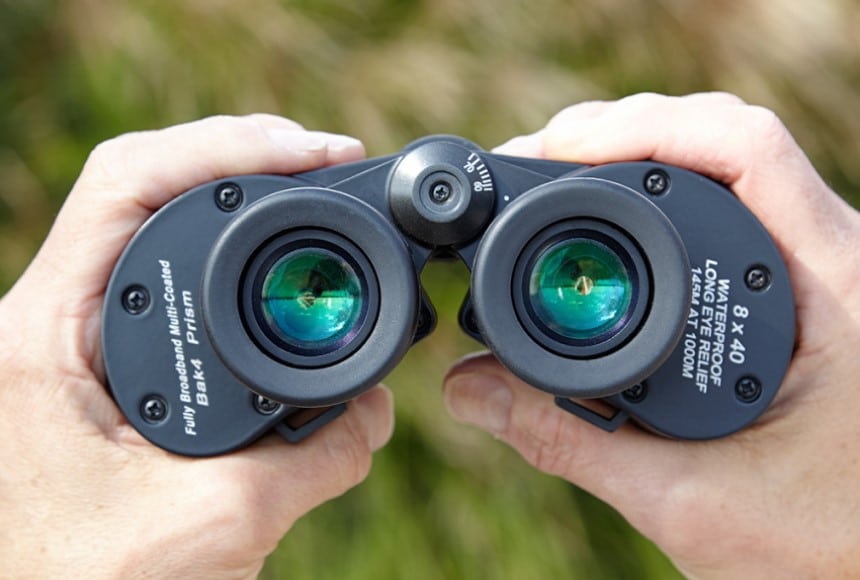
You are likely reading this because you are looking for how to fix binoculars by yourself. It can be frustrating if your binoculars are not giving you a crystal clear image as you expect. You attempt to clean the lens with a piece of Lint-free cloth, maybe it just got blurred, but then your images remain blurred. Or you get two images instead of one unified image.
The illustrated situations above are a serious dilemma because optics repairs can be costly. Purchasing new binoculars is totally out of the question as well, yet you need binoculars. This dilemma can be resolved by repairing your faulty binoculars at home. However, it would help if you had guidance and directions not to complicate the situation you are trying to fix.
Binoculars are a type of telescope; telescopes can either be refractive Trusted Source Refracting Telescope | Britannica Commonly known as refractors, telescopes of this kind are typically used to examine the Moon, other objects of the solar system such as Jupiter and Mars, and binary stars. www.britannica.com or reflective Trusted Source Reflecting Telescope | Britannica Reflectors are used not only to examine the visible region of the electromagnetic spectrum but also to explore both the shorter- and longer-wavelength regions adjacent to it (i.e., the ultraviolet and the infrared). www.britannica.com . Most binoculars are refractive telescopes. Although reflective binoculars exist, they are not as common as the refractive ones. Binoculars have various ranges that are useful for different life situations. Hunting binoculars are different from concert binoculars. Some rangefinder binoculars can accurately help you calculate the distance between you and your target, saving you the guesswork.
Before conducting a binoculars repair in your home by yourself, there are a few boxes to check to ensure you are ready for the task ahead.
You want to check the warranty on your binoculars before dismantling it, especially if it’s an expensive one. An average binoculars cost between $200-$300, and some people splurge as much as $2000 on binoculars! Binoculars under 300 dollars can surprisingly function better than thousands of dollars binoculars, emphasizing that the efficiency of binoculars is not based on the price alone.
Binoculars purchased as brand new from authorized retail stores usually have warranties. The warranty period depends on the price of the binoculars and the manufacturer.
If you are still lucky to have a warranty on your binoculars, you might stop reading here. Why? You ask. It is just unwise to open up a pair of binoculars while a warranty still exists on it when you can take it back to the store for a free repair or even get a replacement. A replacement is only possible under certain conditions, like when the defect is from the manufacturer. Why should you repair it when your pair of binoculars is still under warranty. This service depends on your manufacturer or dealer. It also depends on how long you are into the warranty.
For example, a one-year warranty from some manufacturers makes you eligible for a replacement if the fault is a factory fault. If you dismantle your binoculars before taking them back to the dealer while you still have a warranty on the binoculars, you might void your warranty. This means you will no longer be qualified for a replacement or even a repair.
Repairing a pair of binoculars requires special tools because it’s not something you repair every week or every month. You might need to purchase tools not present in your toolbox. Tools you might need are:
Other essential items to have available are cotton buds, odorless grease, and lint-free cloths/napkins.
Another essential thing to have available is the user manual that came along with your binoculars on purchase. It does not teach you how to repair binoculars, but it’s going to save you a lot of stress trying to identify/locate parts of your binoculars. If you cannot find the user manual, the internet has made it easy to access almost anything. You can search for the model of your binoculars on the web to identify the parts.
This binoculars repair manual will teach you how to repair three essential parts of your binoculars. They are the three major parts of binoculars and are more likely to develop faults. You do not have to be a professional to repair simple binocular defects.
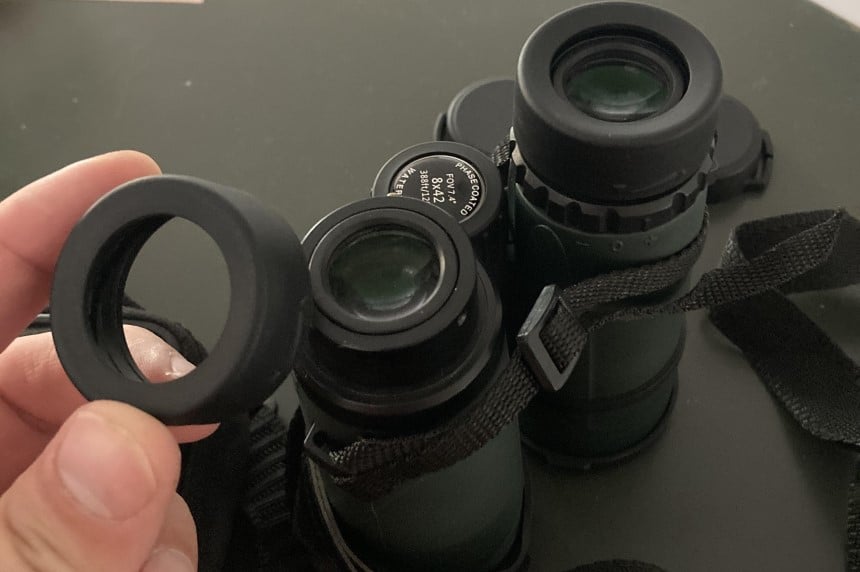
The lens is undoubtedly an essential part of the binoculars, and one of the most popular things that could go wrong with binoculars is the lenses shifting out of place or blurred lens. This could be a result of sudden falls or stains on the lens. It is a very delicate part of the binoculars because it is made from glass. The lenses focus on the images.
Sometimes the lens could get blurred from food stains, raindrops, tears, and saliva. Use lint-free cloths (you can get this from optical shops) and only lens cleaners that are isopropyl alcohol-based on cleaning the lens.
Do not clean your lenses with fiber clothing, toilet tissue, wipes, handkerchief, or towels.
Step 1: Unscrew the screws holding the lens in place.
Step 2: Remove the lens and clean with a lint-free cloth. You can also wash with soapy water.
Step 3: Dry the lens in an open space but not in the sunlight.
Step 4: When it is dry, you need to measure the inside of your binoculars by measuring the center point of your lens.
Step 5: Reinstall the lens at the center point; avoid using your fingers as this can smudge your cleaned lens with your fingerprints. Instead, use a pair of tweezers.
Fixing a binocular prism is the most challenging repair job on binoculars. One of the most common issues with binoculars is “double vision” or “misalignment”, which happens when the prisms come out of alignment. This will make your binoculars give a double image. The easiest way to repair misaligned images is by using a
collimator
Trusted Source
What is collimation in binoculars? | Study.com
Because binoculars have two sets of lenses that provide two separate pictures to your eyes, they much be collimated, or aligned, very precisely so that brain receives one complete image.
study.com
, and the process is called “collimation”. Ideally, perfect working binoculars should give one aligned image originating from two sources. Collimation can be horizontal or vertical. Nevertheless, you can improvise aligning binocular prisms with a screwdriver, though the process is called conditional alignment. To fix this requires a tripod adapter mentioned earlier.
While purchasing binoculars, it is essential to look out for binoculars with unflinching alignments like the Orion Giant View 25×100 Astronomy Binoculars. Conditional alignment involves the following steps;
Step 1: Identify or locate a target; it could be a tree or a wall.
Step 2: Mount your binoculars on a tripod stand. Set it at about 100 yards away from a fixed object such as a tree or a wall. Your target distance depends on the Magnifying power of your lens. For example, 10x magnification binoculars should be 328 feet away from the object.
Step 3: Locate the screws holding the prisms. Usually, the screws holding the prisms are under a covering.
Step 4: Aim at your target to locate the fault in the prisms. The target has to be on an equal plane through both sides. If the target is higher or lower on either side, adjust the screw on that side by loosening or tightening till the target aligns.
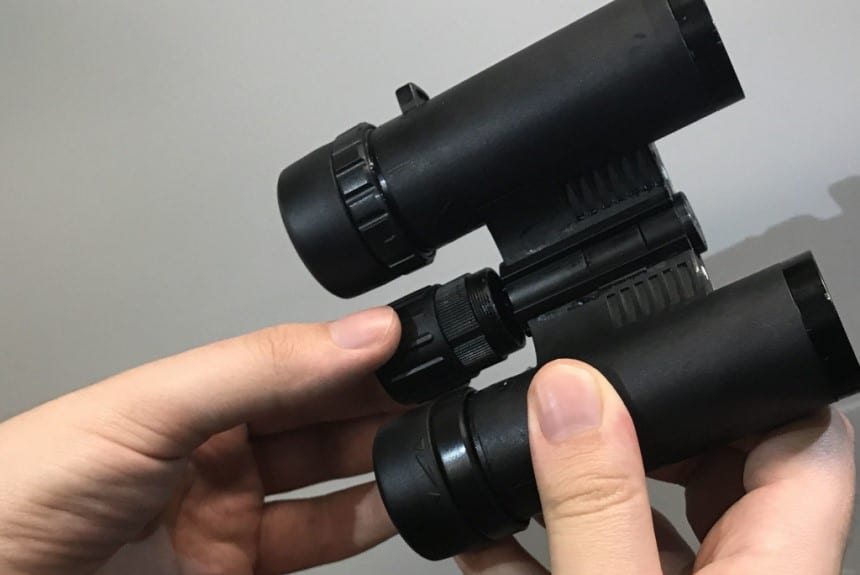
The focusing knob is the easiest part of binoculars to fix at home. It is used to control the view and switch modes on the binoculars. It generates friction when used excessively. You will know this when it stops moving freely and starts producing sound as it moves. Then you know the focusing knob needs lubrication.
Step 1: Remove the screw on top of the focusing knob.
Step 2: With a magnifying glass, check for small dust and rust particles. Clean these out with cotton buds or a soft brush.
Step 3: Lubricate the knob gears with grease using the cotton swabs(it’s essential not to use the lubricant excessively, this will make the screws very slippery when you want to fasten it back)
Step 4: Fasten back the screw.
Now that you have fixed all the issues with your binoculars, step out to use them while adjusting any other detail you might have missed.
There are certain situations or conditions where you might have to consult a specialist and not attempt to repair your Binoculars yourself. Such issues include:
Cracked or broken lenses cannot be fixed. They have to be replaced by optics experts.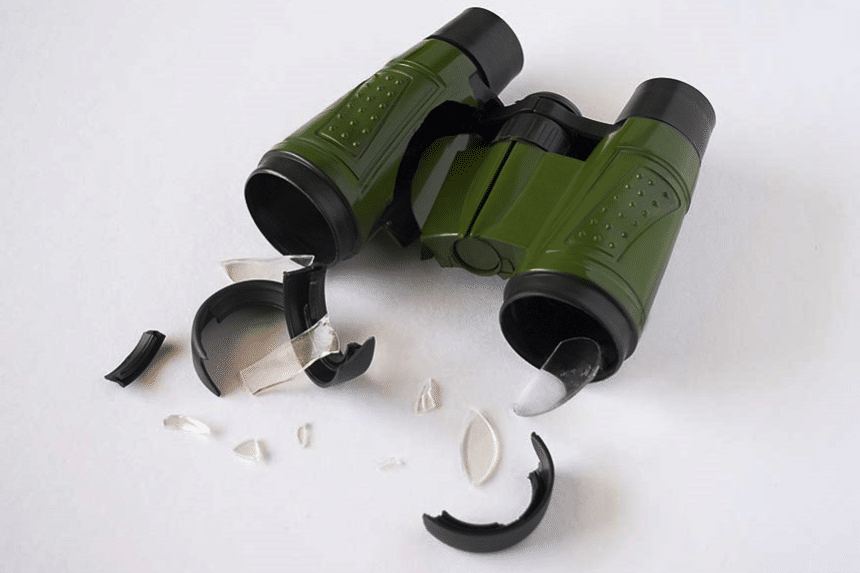
When the gear that controls the Focusing knob is broken, the knob will not maintain the focus of images. The knob will have to be replaced.
Repairing your binoculars yourself will save you money. However, you can also complicate the state of your binoculars if you are not careful with the repair. If you are not confident of how you will repair your binoculars by yourself, it is best to go to the optics repair shop; as the saying goes, “it is better to be safe than sorry”.
To avoid the stress of visiting an optics repair shop and spending a massive amount of money, proper maintenance of your binoculars is paramount.
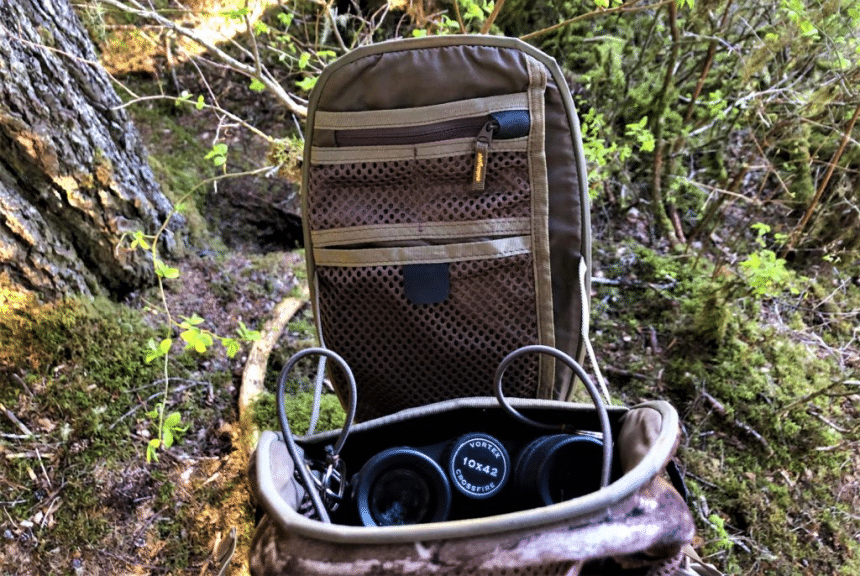
Learning to repair binoculars at home is not enough. Maintenance is the first thing to know even before repairs.
Sometimes, things happen beyond us, and our binoculars get damaged in the process. Nevertheless, there are ways for you to increase the lifespan of your beloved binoculars if you follow the rules:
Sometimes, you might need to get a new pair of binoculars as an optics repair cannot fix some issues. It is advised that you purchase another if the cost of repairs of your binoculars is on the steep side.
Binoculars can be relatively cheap and can be as high as thousands of dollars. The Orion Scenix 7×50 is one of the few binoculars that fall below a hundred dollars price.
In summary, a visit to the repairer is unavoidable when dealing with some binoculars issues. However, if you want to repair your binoculars yourself, this manual on repairing binoculars can always help you.
